Patent tonging for oysters on the Patuxent River
Simon Dean and his crew catch bushels of the native shellfish on board the Roughwater.
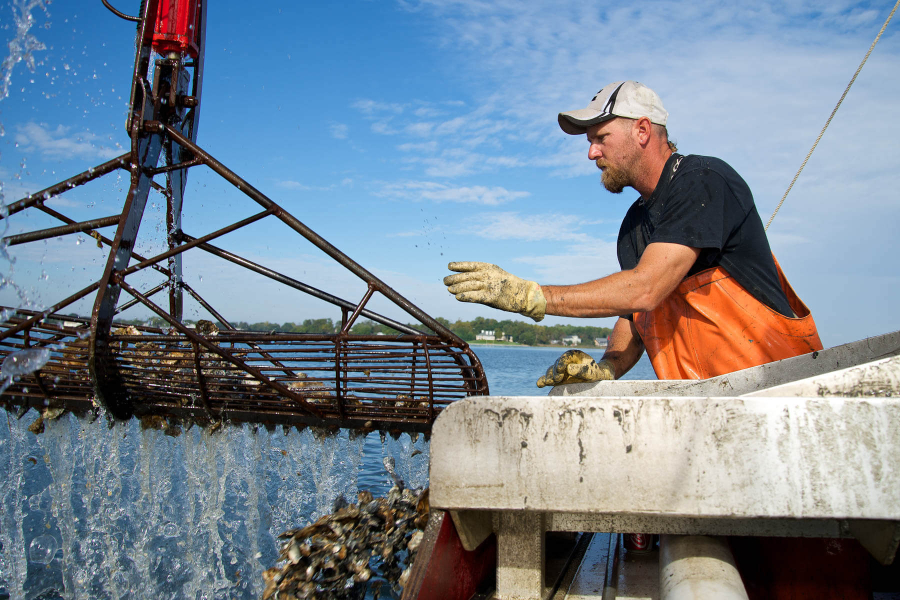
At sunrise, the Roughwater heads out of its Solomons Island harbor and onto the Patuxent River. Driven by a captain who has worked the Chesapeake Bay for two decades, the boat stops over an unseen reef. Simon Dean and his crew—Brian Elder and Jason Williams—are wearing waterproof bibs and white rubber boots, and are ready to bring in oysters.
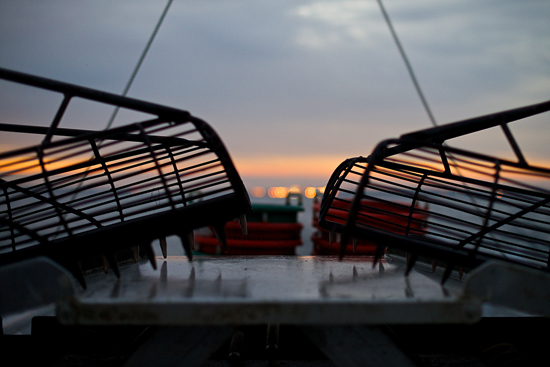
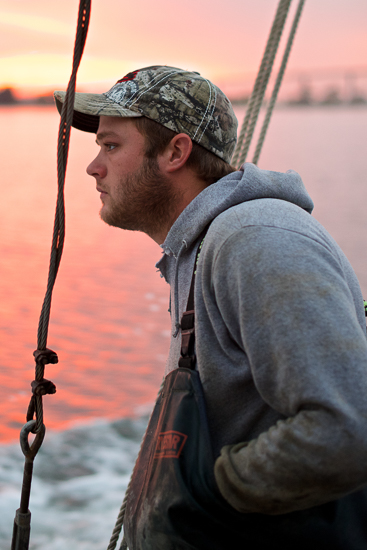
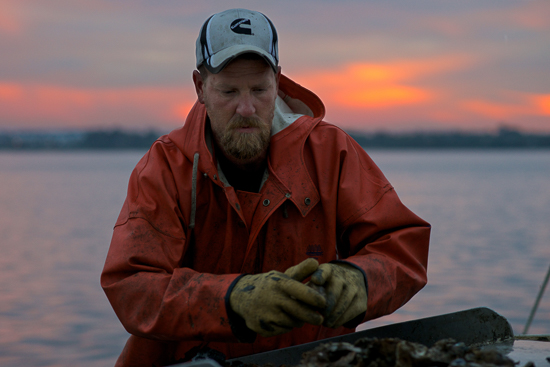
Known as patent tonging, the work that takes place on the Roughwater moves in one fluid motion: hydraulic tongs enter the water, grab a mess of oysters and dump them with a crash onto a metal culling table. Three-inch grooves built into the table’s edge help the crew cull, or sort the oysters by size. Good oysters are tossed into a plastic basket, while too-small bivalves and empty shells go back overboard.
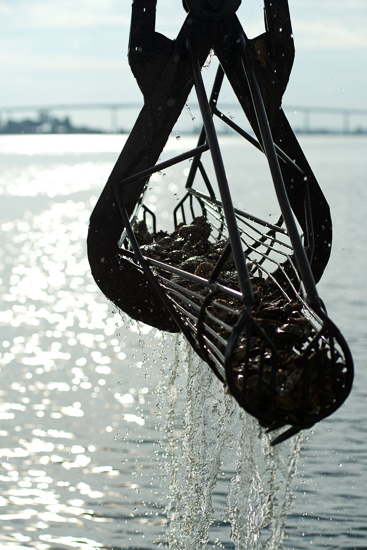
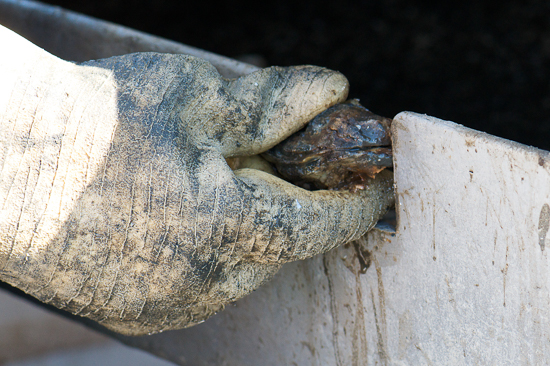
The patent tongs are controlled by foot pedals: one pushes the tongs up and down, while the other swings them open and closed. “At the end of the day, your feet are more tired than your hands,” Dean said.
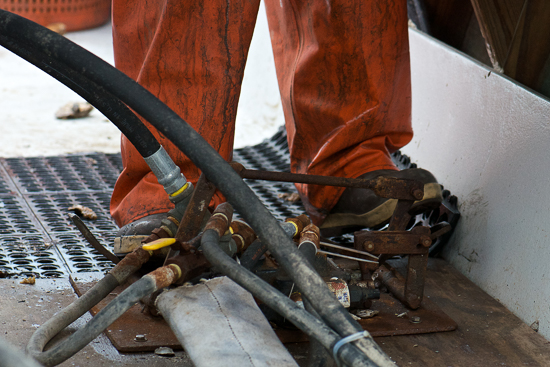

As a waterman, Dean’s work is dependent on the seasons. During the winter, he oysters. During the summer, he crabs and takes fishing parties out on the Bay. He bought the Roughwater in 2009, and was “running everybody else’s boat before that.”
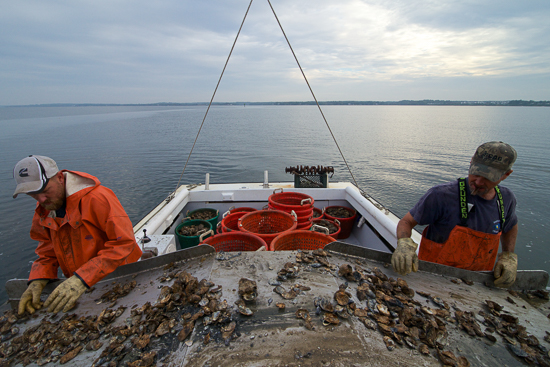
Wooden-handled culling hammers help Dean and his crew knock undersized oysters off of bigger bivalves. Young oysters attach themselves to adults in order to grow, forming dense reefs that offer habitat to fish, crabs and other critters. While concrete is often used to construct artificial reefs, shell makes the best substrate for spat.
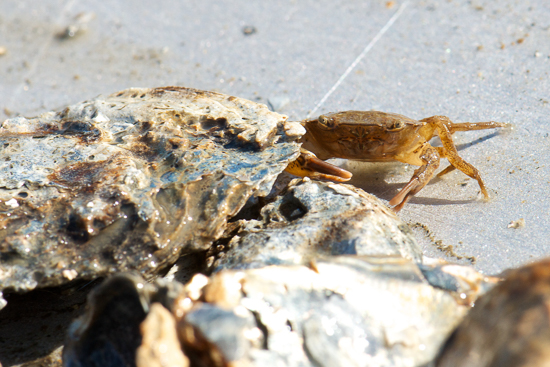
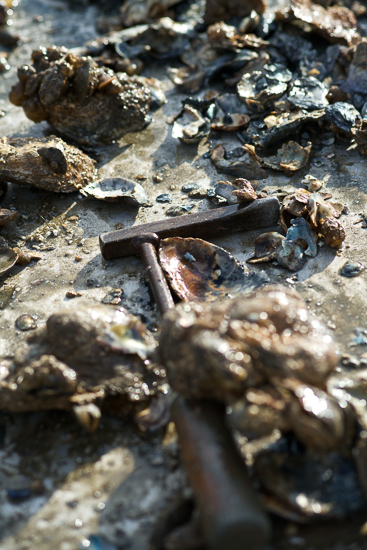
Watermen must work to “get as much shell off as you can,” Dean said. In part, this is because buyers prefer the look of a clean oyster. And in part, it is because shell must go back into the Bay, where it will provide a new place for young oysters to settle.
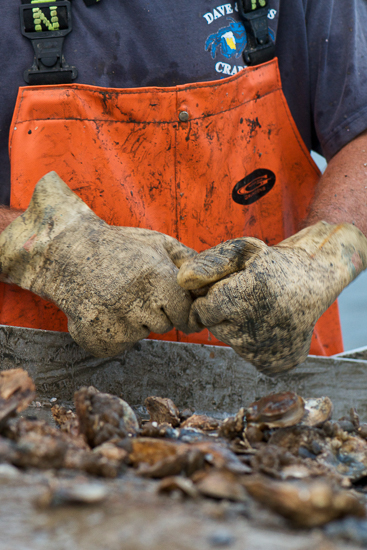

In an effort to restore natural oyster populations to the Bay, shell recycling programs have popped up across the region and lawmakers have established oyster sanctuaries and strengthened harvesting restrictions. But this seems to have fueled tension between states and the industry and fed the belief that watermen often work in conflict with the law.
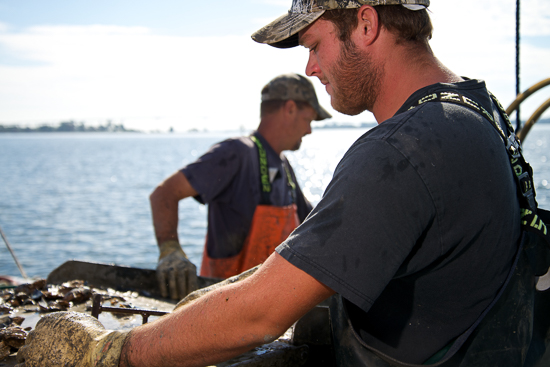
Dean and his wife, Rachel, are working to change this oft-held perception, using heritage tourism to teach both children and adults about estuarine life and the role that watermen play in the region’s history and economy. “We’re not poachers. We’re not outlaws. We’re not thieves,” Dean said. And he hopes that Solomons Island Heritage Tours will “break down that stigma that watermen have [against them].”
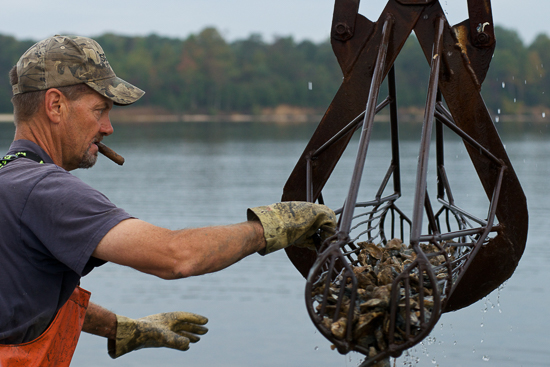
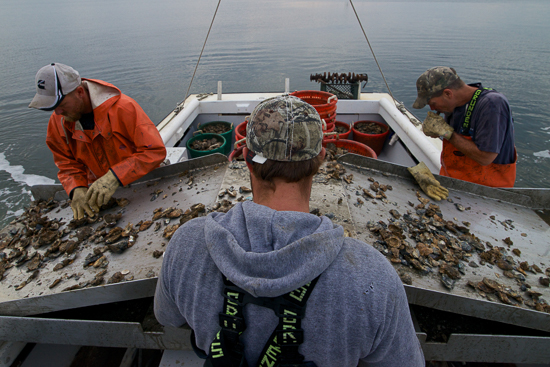
Dean and his crew don’t have time for conversation while the tongs are running. Dean thinks about how he will sell his oysters, and how he will compete with other watermen. By the end of the day, they have reached their patent tonging limit: 15 bushels per license, with two licenses per boat. Dean will sell some of these to restaurants and some to individuals. But will he ever keep any for himself? “I like them,” Dean said. But when it comes to eating them, “I just don’t have time.”
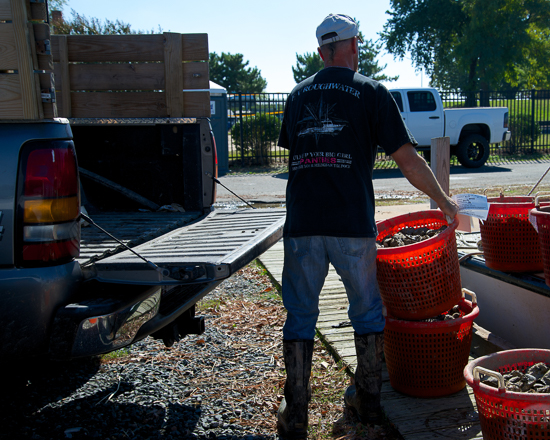
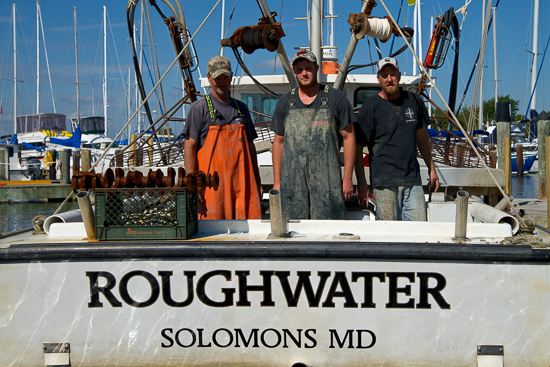
To view more photos, visit the Chesapeake Bay Program Flickr page.
Captions by Catherine Krikstan.

Comments
Simon, we are going to miss fishing with you out of Bunkys, this spring. penciled in a trip on The Red Osprey, for next week. Trying to confirm it with Bunkys, but keep missing them by phone. Photos of the oystering process are great!!
^Simon, I think he is questioning whether you can ;)
Be a man hand tongs only.
Thanks, Cate! You can follow Simon and Rachel Dean on Facebook at https://www.facebook.com/SolomonsIslandHeritageTours (and you can follow the Bay Program at https://www.facebook.com/ChesapeakeBayProgram).
Beautifully told story with wonderful images. Will there be an ongoing story to share on Facebook? That would be great.
Love that he's trying to make a better name for himself and his colleagues. I want to take a tour!
Great pictures.
Thank you!
Your comment has been received. Before it can be published, the comment will be reviewed by our team to ensure it adheres with our rules of engagement.
Back to recent stories